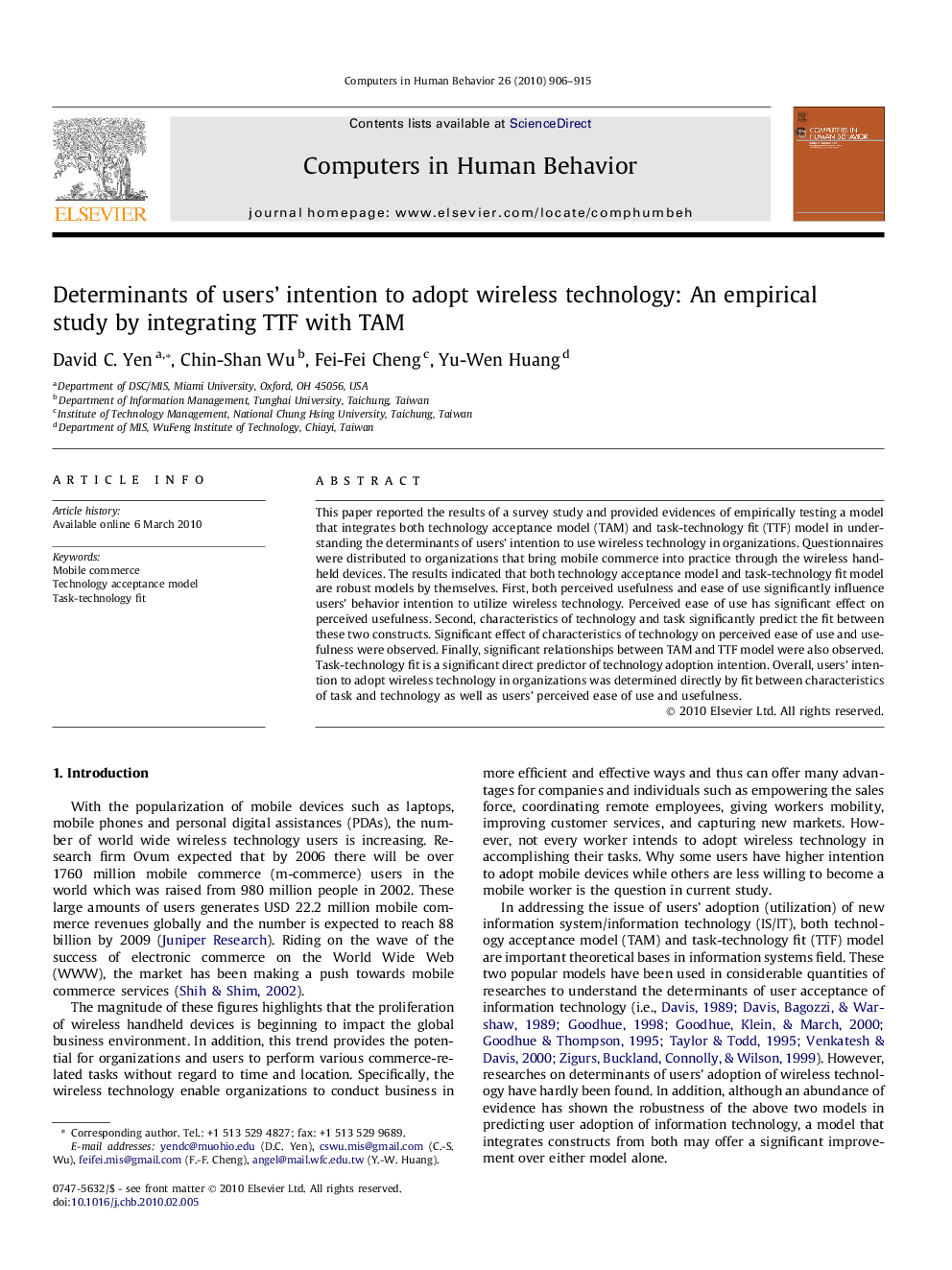| Article ID | Journal | Published Year | Pages | File Type |
|---|---|---|---|---|
| 351892 | Computers in Human Behavior | 2010 | 10 Pages |
This paper reported the results of a survey study and provided evidences of empirically testing a model that integrates both technology acceptance model (TAM) and task-technology fit (TTF) model in understanding the determinants of users’ intention to use wireless technology in organizations. Questionnaires were distributed to organizations that bring mobile commerce into practice through the wireless handheld devices. The results indicated that both technology acceptance model and task-technology fit model are robust models by themselves. First, both perceived usefulness and ease of use significantly influence users’ behavior intention to utilize wireless technology. Perceived ease of use has significant effect on perceived usefulness. Second, characteristics of technology and task significantly predict the fit between these two constructs. Significant effect of characteristics of technology on perceived ease of use and usefulness were observed. Finally, significant relationships between TAM and TTF model were also observed. Task-technology fit is a significant direct predictor of technology adoption intention. Overall, users’ intention to adopt wireless technology in organizations was determined directly by fit between characteristics of task and technology as well as users’ perceived ease of use and usefulness.
